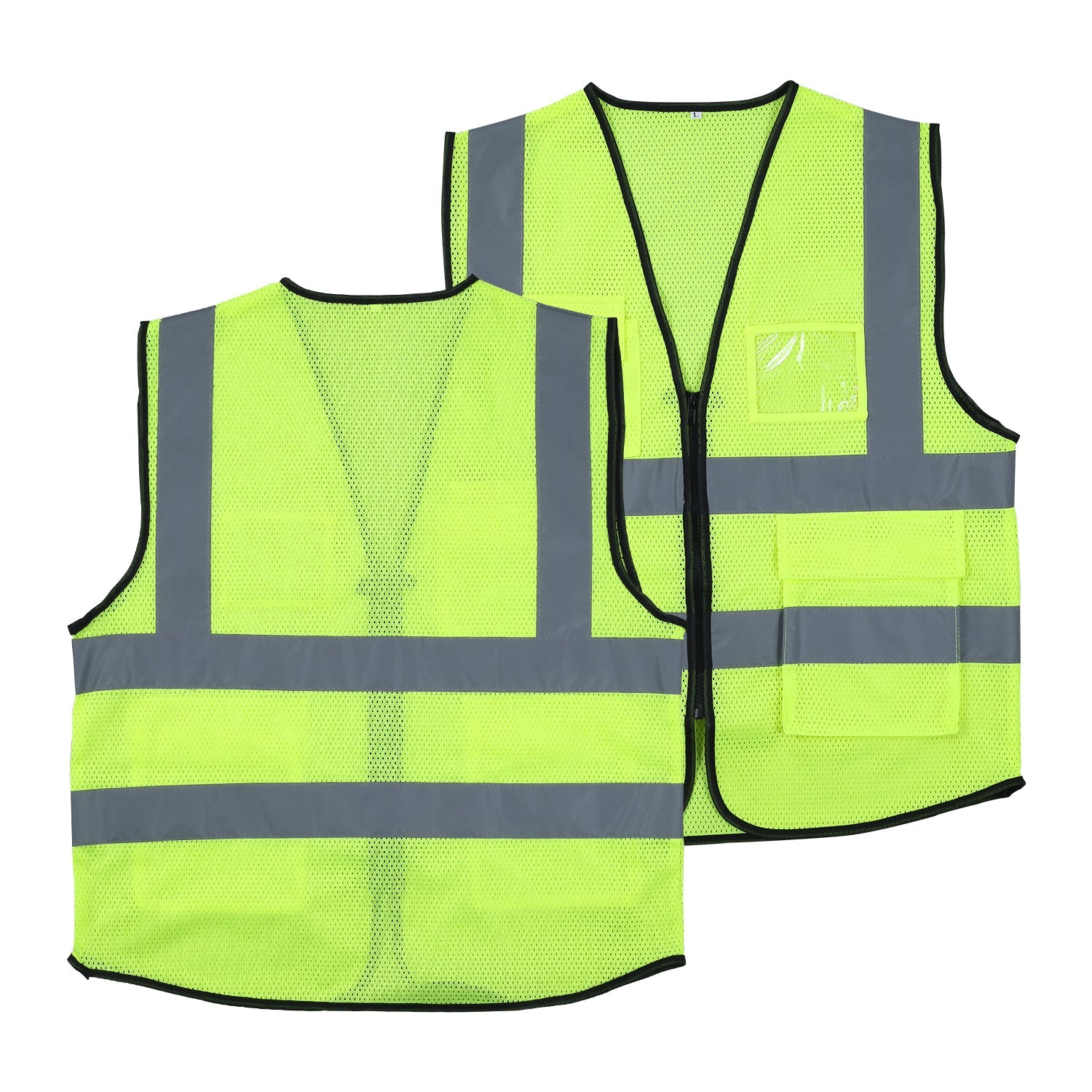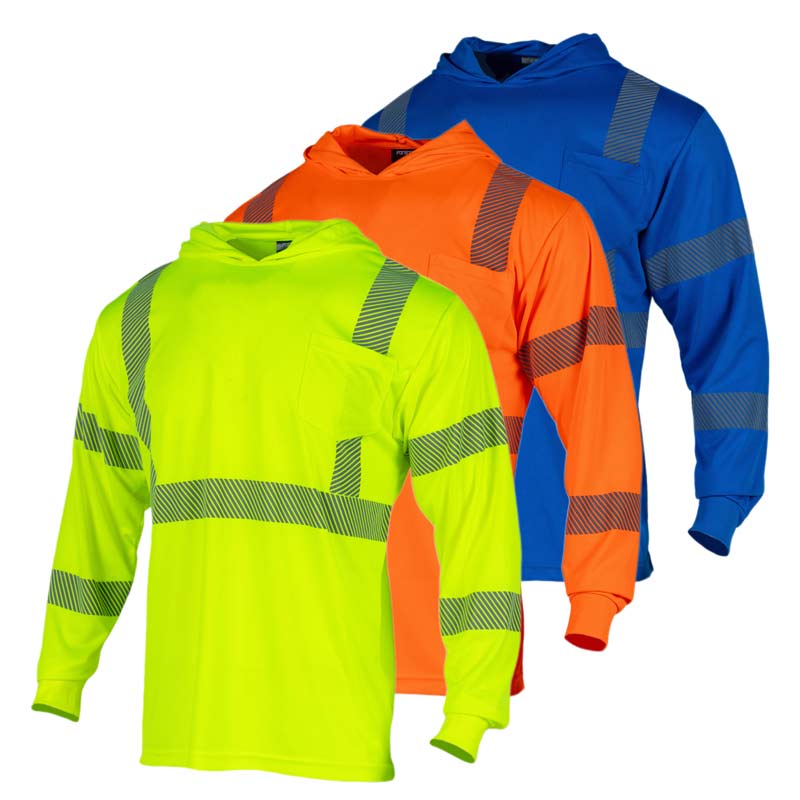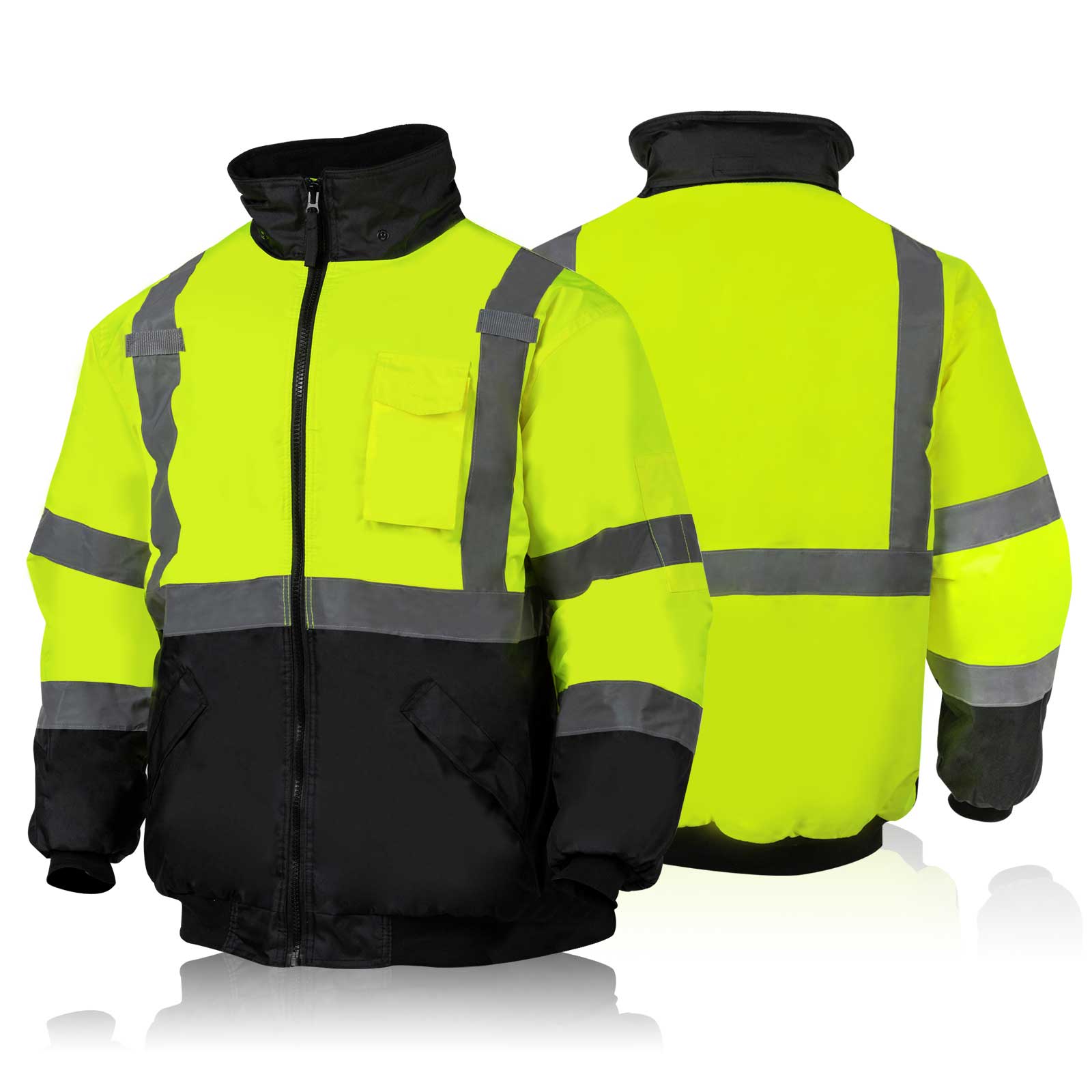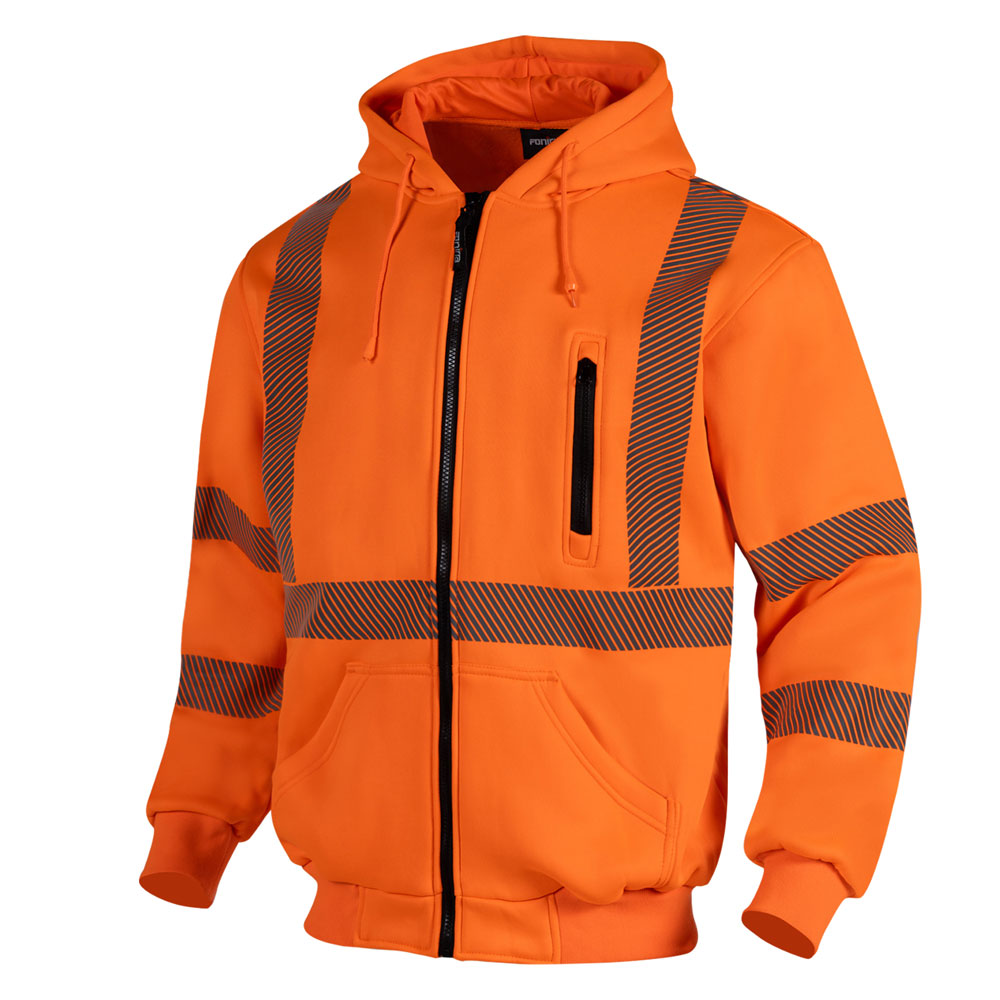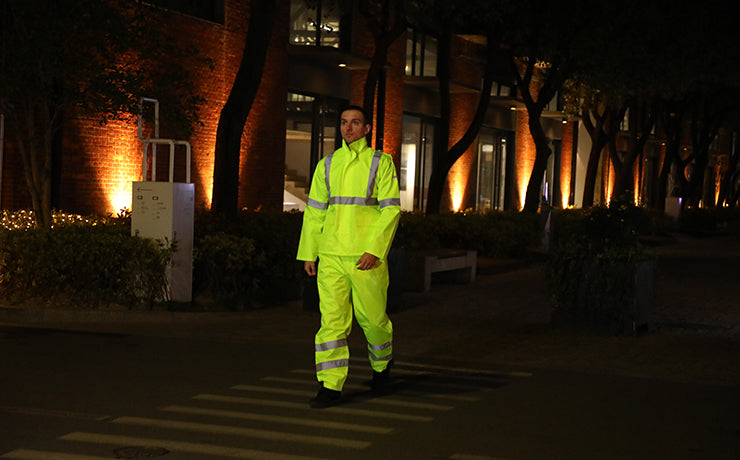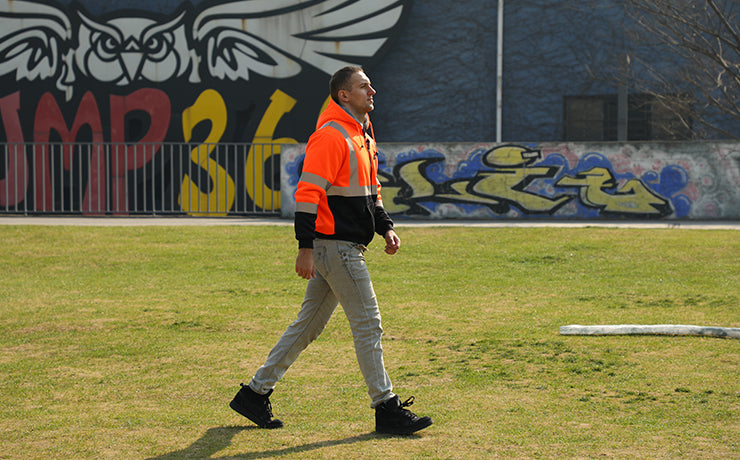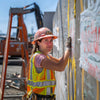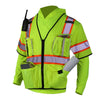Building a Safety-First Culture: The Role of Professionals in Construction Jobsite Safety
In the construction world, safety isn't just a rule; it's the heart of everything we do. It's crucial to remember that the job isn't just about building structures—it's about keeping every worker safe every day.
Creating a space where safety is always first means fewer accidents and a stronger, more confident team. Let's explore what a safety-first culture really means, why it's vital for reducing accidents, and how leaders and professionals can make sure everyone gets home safely at the end of the day.
cover image by: pressfoto on Freepik
Table of contents:
- Safety-First Culture in Construction
- Strategies for Professionals to Engage Workers in Safety Practices
- Use of Technology and Equipment to Enhance Safety
- Emergency Preparedness and Response Planning
- Developing and Implementing a Construction Safety Program
- Compliance with OSHA Standards and Regulations
- Conclusion
Safety-First Culture in Construction
A safety-first culture means making safety the most important thing at a construction site. It's all about thinking of safety before starting work, while working, and even after the job is done.
This culture is super important because it helps reduce accidents and keeps workers from getting hurt. When safety comes first, everyone from the top bosses to the newest worker understands that keeping safe is not just a rule but a way of doing things.

Related: Creating a Safety Culture in Construction: Leadership and High Visibility Standards
Why Invest in Safety and Health Programs?
The financial impact of construction injuries is substantial. Fatal construction injuries cost the United States around $5 billion annually in healthcare, lost income, reduced quality of life for family members, and lost production. The total workplace injury costs exceed $170 billion each year.
Safety training is shown to be a cost-effective investment. OSHA estimates that construction companies can save approximately $4 to $6 for every $1 invested in safety programs.
Role of Leadership in Fostering a Safety-First Environment
Leadership plays a big role in making sure everyone stays safe. It's up to the bosses and managers to show that safety is important by following the rules themselves and making sure everyone else does, too. They need to talk about safety, provide training, and listen to workers' concerns. When leaders care about safety, it encourages everyone to do the same.
Learn more: 10 Things A Safety Supervisor Need to Look Out For (Checklist)
Strategies for Professionals to Engage Workers in Safety Practices
Engaging workers in safety practices is essential in the construction industry to ensure everyone's health and safety. Here are five strategies for construction professionals to effectively involve their teams in safety measures, along with ways to implement each strategy.
1. Educate the Workforce on Construction Jobsite Safety
Education is the cornerstone of any effective safety program. Providing workers with a comprehensive understanding of construction jobsite safety, including the proper use of personal protective equipment (PPE) and the identification of safety and health hazards, empowers them to protect themselves and their colleagues.
How to Implement?
-
Conduct regular training sessions on OSHA standards and other relevant safety procedures.
-
Use visual aids and hands-on demonstrations to teach about fall protection, electrical safety, and the use of protective equipment.
-
Update training material regularly to include information on new safety technologies and practices.
2. Look Out for Worker Well-Being
Worker well-being extends beyond physical safety to include mental health and stress management. Recognizing and addressing the signs of stress, fatigue, and other health issues can prevent accidents and improve overall workplace safety.
How to Implement?
-
Implement a health management system that includes mental health resources.
-
Schedule regular check-ins with workers to discuss their well-being and any concerns they may have.
-
Provide access to wellness programs that address common issues such as noise-induced hearing loss and musculoskeletal disorders.
3. Employ Effective Safety Management
An effective safety management system integrates safety into every aspect of construction projects, from planning through execution. It involves risk assessments, hazard communication, and the development of emergency response plans to mitigate safety and health hazards.
How to Implement?
-
Develop a comprehensive safety and health program that covers all aspects of construction work.
-
Conduct regular site inspections to identify and rectify potential hazards.
-
Foster open communication about safety issues and encourage workers to report hazards without fear of reprisal.
4. Promote the Use of Personal Protective Equipment (PPE)

PPE is vital in protecting workers from health hazards on construction sites. Educating workers on the proper selection, use, and maintenance of protective equipment ensures they are shielded from fall hazards, hazardous chemicals, and other dangers.
How to Implement?
-
Ensure a proper fit for all PPE and provide training on its correct use.
-
Regularly inspect PPE for damage and replace it as necessary.
-
Involve workers in the selection process to ensure the equipment meets their needs and is comfortable to wear.
Related: Exhaustive List of High-Visibility Clothing Requirements for Every Profession
5. Foster a Safety Culture
Creating a culture where safety is valued and prioritized by everyone on the job site is crucial for long-term success. This involves leadership commitment, worker involvement, and the recognition of safety achievements.
How to Implement?
-
Lead by example; management should always adhere to the safety practices they advocate.
-
Recognize and reward safe behavior and practices among the construction crew.
-
Encourage peer-to-peer safety observations and interventions to promote a collective responsibility for safety.
By implementing these strategies, construction professionals can significantly enhance worker engagement in safety practices, leading to a safer and more productive job site.
Use of Technology and Equipment to Enhance Safety
In the construction industry, leveraging technology and equipment for safety is critical. It not only protects workers but also streamlines operations, ensuring that projects are completed efficiently and safely.
1. Wearable Safety Devices
Wearable devices can monitor the vital signs of construction workers, detecting signs of fatigue or heat stress. They can also alert workers to potential hazards in their vicinity, enhancing occupational safety.
Equip workers with smartwatches or fitness trackers that can send alerts in case of abnormal vitals or dangers nearby.
For example, this fitness tracker by Kinetic Insurance detects the high-risk behaviors of construction workers.
2. Drones for Site Inspection
Drones offer a bird's-eye view of construction sites, enabling project managers to identify potential safety hazards without putting workers at risk.
Regularly fly drones over construction sites to inspect hard-to-reach areas and identify hazards involved in material handling or near heavy machinery.
3. Virtual Reality (VR) for Safety Training
VR simulates real-life construction environments and scenarios for risk-free training, allowing workers to gain a basic understanding of occupational safety and health practices.

Companies like Pixo promotes the use of VR setups to conduct safety training sessions that cover scenarios like confined space entry, fall protection, and hazard recognition.
4. Mobile Safety Apps
Safety apps on smartphones or tablets can provide workers with easy access to safety manuals, emergency action plans, and incident reporting tools.
Develop or adopt mobile apps that allow workers to quickly access fire protection plans, OSHA requirements, and report incidents or hazards on-site.
5. Automated Machinery for Dangerous Tasks
Automating tasks that involve high risk, such as lifting heavy materials or working at heights, reduces the physical strain on workers and minimizes exposure to health hazards.
Introduce robotic arms or automated guided vehicles for material handling and other repetitive tasks that pose risks to the human body.
Emergency Preparedness and Response Planning
Emergency preparedness and response planning involves developing and implementing plans to address potential emergencies and disasters at construction sites. This planning ensures that when unexpected events occur, the impacts on health and safety are minimized, and the construction site can recover quickly.
Related: Fire Retardant Clothing For Workers: 5 things you need to know before purchasing
What is Involved in the Emergency Preparedness and Response Planning?
-
Risk Assessment: Identify all potential emergencies that could occur, including natural disasters, fires, structural failures, and hazardous material spills. Evaluate the likelihood of each event and its potential impact on worker safety and site operations.
-
Develop Emergency Action Plans: Create specific plans for each type of emergency, outlining the steps to protect workers, including evacuation routes, assembly points, and methods for accounting for all employees. Ensure plans cover the use of PPE, first-aid procedures, and confined space rescue protocols.
-
Training and Drills: Conduct training sessions for all workers on emergency procedures, emphasizing the importance of occupational safety and health administration guidelines. Regularly schedule drills to practice emergency response actions, ensuring everyone knows their role during an actual event.
-
Equipment and Technology: Equip the site with necessary safety and emergency equipment, such as fire extinguishers, first-aid kits, and communication devices. Consider the use of technology, such as emergency notification systems, to alert workers of an emergency quickly.
-
Review and Update: Regularly review and update emergency plans to reflect any changes in construction site layout, personnel, or other relevant factors. Involve workers in the review process to gain insights and ensure that plans remain practical and effective.
Developing and Implementing a Construction Safety Program
A construction safety program is a comprehensive plan designed to ensure the health and safety of employees working on construction sites.
It encompasses a wide range of policies, procedures, training programs, and practices aimed at identifying, reducing, and managing risks and hazards associated with construction work.
The primary goal is to protect workers from injuries and illnesses by creating a safe and healthy work environment, adhering to occupational safety and health regulations, and promoting a culture of safety among all employees.
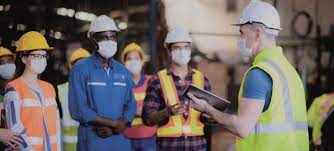
Steps to Create an Effective Construction Safety Program:
-
Conduct a Risk Assessment: Identify potential hazards on the construction site, including but not limited to, fall hazards, electrical dangers, and exposure to hazardous chemicals. Assess the severity and likelihood of these hazards to prioritize safety measures.
-
Develop Safety Policies and Procedures: Create clear and concise safety policies that outline the responsibilities of both employers and employees in maintaining a safe work environment. Develop procedures for common tasks and specific operations that pose risks to workers.
-
Implement Training Programs: Provide comprehensive training for all employees on the safety policies, procedures, and the correct use of PPE. Include specialized training for tasks that present unique hazards.
-
Establish Emergency Response Plans: Develop and implement plans for emergency situations, including fires, medical emergencies, and natural disasters. Ensure all employees are familiar with these plans and conduct regular drills.
-
Regular Site Inspections and Audits: Conduct regular inspections of the construction site to identify and correct potential safety hazards. Perform audits of the safety program to ensure its effectiveness and compliance with regulations.
-
Encourage Reporting and Communication: Create a system for employees to report hazards, incidents, and near-misses without fear of reprisal. Promote open communication between workers and management regarding safety concerns and improvements.
-
Review and Update the Safety Program: Regularly review and update the safety program to reflect changes in operations, new safety regulations, and lessons learned from incidents.
Construction Safety Week
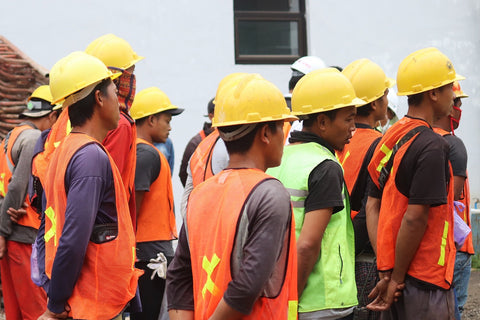
Construction Safety Week is an annual event celebrated in the construction industry to highlight the importance of safety and health on construction sites. It's a dedicated time for companies, workers, and stakeholders to focus on safety awareness, share best practices, and reinforce the commitment to preventing injuries and promoting a culture of safety across the industry.
During this week, various activities such as safety training sessions, workshops, demonstrations, and discussions are organized to engage employees, raise awareness about common hazards, and emphasize the continuous need for safety vigilance.
The ultimate aim is to remind everyone in the industry that safety is a collective responsibility and that every action counts towards creating safer construction sites.
Learn more about construction safety programs: Safety Training: Incorporating High Visibility Workwear into Your Construction Safety Program
Compliance with OSHA Standards and Regulations
The Occupational Safety and Health Administration (OSHA) plays a critical role in ensuring workplace safety in the United States, including the construction industry. OSHA's construction standards, often referred to as the "OSHA 40" due to the comprehensive nature of the regulations, are designed to protect construction workers from a broad range of hazards.
These standards cover various aspects of construction work, from the use of PPE and fall protection to handling hazardous materials and operating heavy machinery.
Related: OSHA Safety Vest Requirements in Warehouse (For Workers)
The Role of OSHA in Promoting Construction Safety
OSHA's role in promoting construction safety is multifaceted. It involves setting and enforcing safety standards, providing training and education to employers and workers, and offering assistance, guidance, and outreach. OSHA's impact on jobsite practices is significant, as compliance with its standards helps to reduce workplace injuries and fatalities.
Learn more: OSHA Requirements for High Visibility Clothing - Updated for 2023
OSHA conducts inspections, both scheduled and unscheduled, to ensure that construction sites adhere to its regulations. When violations are found, OSHA can issue fines and require corrective actions, motivating companies to maintain high safety standards.
OSHA Construction Standards
Here are key areas covered by OSHA standards relevant to construction safety:
-
Fall Protection: Guidelines on preventing falls from heights, one of the leading causes of fatalities in construction.
-
Scaffolding: Standards for the construction and safe use of scaffolds.
-
Ladders: Regulations on ladder safety, including proper use and maintenance.
-
Electrical Safety: Standards to prevent electrical hazards, including electrocution and fire.
-
Personal Protective Equipment (PPE): Requirements for the use of helmets, goggles, and other protective gear.
-
Hazard Communication: Guidelines for communicating information about chemical hazards through a comprehensive program, labels, and safety data sheets.
-
Excavations: Regulations for trenching and excavation, including requirements for protective systems.
-
Cranes and Derricks: Standards for the safe operation of cranes and derricks on construction sites.
-
Respiratory Protection: Requirements for respiratory protection programs and equipment.
-
Hearing Conservation: Standards aimed at protecting workers from noise-induced hearing loss.
This list is not exhaustive but highlights the broad scope of OSHA's regulations designed to cover the myriad hazards that construction workers face.
How Compliance with OSHA Regulations Benefits Both Workers and Construction Firms?
Compliance with OSHA regulations benefits workers by providing a safer work environment, reducing the risk of accidents, injuries, and fatalities. It also contributes to workers' long-term health by mitigating exposure to hazardous substances and conditions.
For construction firms, compliance is not just about avoiding fines; it also leads to several positive outcomes:
-
Enhanced Reputation: Companies known for strict adherence to safety standards are more attractive to clients and potential employees.
-
Increased Productivity: A safer workplace leads to fewer accidents and disruptions, enhancing overall productivity.
-
Lower Costs: By reducing the number of accidents, companies can also lower their insurance premiums and decrease the costs associated with workplace injuries.
-
Better Employee Morale: A commitment to safety improves worker satisfaction and loyalty, which can decrease turnover rates.
Conclusion
Ensuring safety in construction isn't just about meeting regulations; it's a commitment to the well-being of every worker. Embracing comprehensive safety programs, adhering to OSHA standards, and leveraging safety-enhancing technology are crucial steps in this journey.
Every effort towards safety, from understanding OSHA's requirements to cultivating a strong safety culture, contributes to a goal of zero harm. By prioritizing safety, the construction industry can protect lives and enhance productivity, making every jobsite a safer place for everyone involved.
-
Posted in
safety

